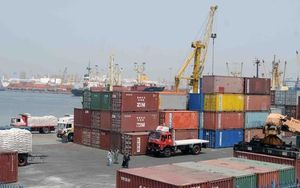After several setbacks and two years of grounding, Europe’s Vega-C rocket triumphantly launched from the Guiana Space Centre on December 5, 2024, successfully placing the Sentinel-1C satellite for the European Union's Copernicus Earth observation program. This moment marked the rocket's return to service since its maiden flight, which ended disastrously when it failed to reach orbit, costing the mission two satellites and undermining confidence across European space operations.
The Vega-C rocket, known for its capability to send smaller payloads to low-Earth orbit, was put through rigorous preparations leading up to this flight. Following the failure of its previous mission, where issues with the Zefiro 40 rocket motor's nozzle led to its grounding for extensive redesign, the rocket needed to prove its reliability to regain the trust of payload customers.
This latest attempt was not without challenges. Initially set for launch on Tuesday, December 3, the flight was delayed twice—first for checks on electrical connections and then due to mechanical issues related to the mobile gantry, which is the structure supporting the rocket on the launch pad. Each delay pushed the hopes of European space enthusiasts back, but the team maintained vigilance and prepared for the successful countdown.
On the day of the launch, Vega-C finally took to the skies at 6:20 PM local time. The successfully deployed Sentinel-1C is part of the Copernicus program, which aims to use radar technology to monitor environmental changes, including climate data for governments and businesses alike.
The road to recovery has been rocky for Europe's space efforts, compounded by geopolitical tensions, particularly following Russia's withdrawal from providing launch services amid the conflict sparked by the war in Ukraine. The continent has struggled to re-establish its independent launch capabilities—an even trickier task after delays with the heavy-lift Ariane 6 rocket, which has only recently succeeded on its inaugural flight.
Now, with plans for four additional Vega-C missions next year and another five planned for 2026, the European Space Agency (ESA) hopes to build momentum following this successful launch. Toni Tolker-Nielsen, the ESA's space transportation director, emphasized the significance of returning Vega-C to active duty, stating, “Vega-C is set to play a pivotal role in our upcoming missions as we aim to bolster Europe’s presence within the burgeoning commercial space market.”
Vega-C's capabilities not only offer flexibility for smaller payloads but also position Europe as a competitive player against established launch service providers like Elon Musk’s SpaceX. The success of this mission, which ignites prospects for future launches, is seen as lifting spirits among European agencies and partners eager for reliable, independent access to space.
Sentinel-1C stands out as another technological advancement for European environmental monitoring, providing insights to forge educated decisions on climate response and sustainability initiatives. With the Copernicus program already playing a cornerstone role within the global climate monitoring framework, this satellite enhances data collection capabilities which are increasingly valuable for resource management, disaster response, and research.
The successful deployment of Vega-C and the rollout of Sentinel-1C signal hope for Europe’s broader space ambitions, highlighting the importance of resilience and innovation within the sector. With dynamic competition at play and several launches lining up, the European space community is not only reclaiming its footing but positioning itself as a formidable player on the world stage.



